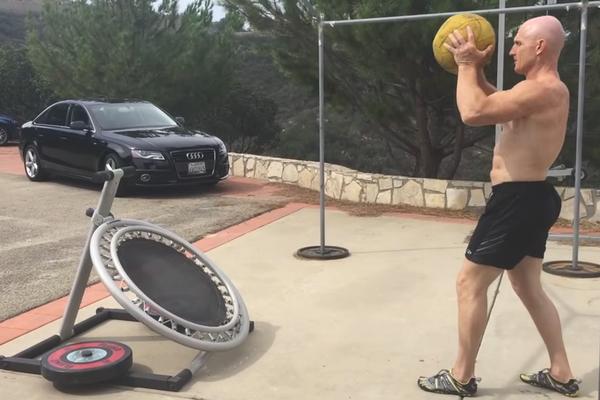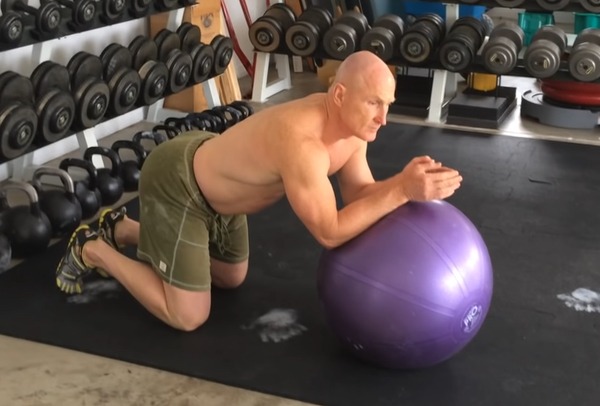The Medicine Ball Overhead Toss
by Paul Chek

Need a versatile exercise that’s good for abdominal and core conditioning?
This video shows you show to perform the medicine ball overhead toss, a good exercise for any sport in which you need move things quickly, like throwing a ball, hitting a puck with a hockey stick or doing arm movements in martial arts, especially when your feet are on the ground.
A pair of unique advantages about using medicine balls:
- You can move them at speeds equal or very close to many work and sports environments.
- Many athletes I’ve worked with have noticed big jump in performance, especially with their weightlifting routines, after they use medicine ball training two or three times even if nothing else in their workouts had changed.
When you move medicine balls very quickly, you’ll up-regulate your fast oxidative muscle fibers. Your brain will learn how to turn them on more quickly and, because the weight is lighter, it can ramp up faster too.
In other words, the nervous system becomes more efficient at up-regulating motor neuron activity. For example, if you’re practicing martial arts, you can turn and throw people more quickly. If you’re a baseball player, you can throw a ball with more explosiveness.
Almost any exercise where there’s higher resistance can be aided by scheduled periods of medicine ball training.
Be sure you have enough flexibility in your thoracic spine. Many people, even young athletes, have too much thoracic kyphosis and forward head posture.
Since the arm depends on extending the thoracic spine after 140 degrees, if an athlete’s spine is rigid, he/she will experience an impingement syndrome when doing any kind of overhead exercises with any repetition. (Watch my video to learn how you can assess your spinal range of motion using the wall leaning test.)
I’ll demonstrate how to perform this exercise with a rebounder (you can do it with a partner too) and a couple of ways to alter it for safety and progression. Also, for this exercise, I use a “dead” medicine ball filled with sand so it won’t bounce.
If you’re a beginner using a rebounder, be sure to adjust it to the right angle so it supports what you’re doing, and catch the ball in front of you. A typical sequence would be one set of 10 reps for each leg forward.
One caveat: This kind of training I’m sharing here isn’t for everyone, especially if you’re not in good shape. If you want to take advantage of this kind of training, consider studying my Dynamic Medicine Ball Training course.
Love and chi,
Paul


